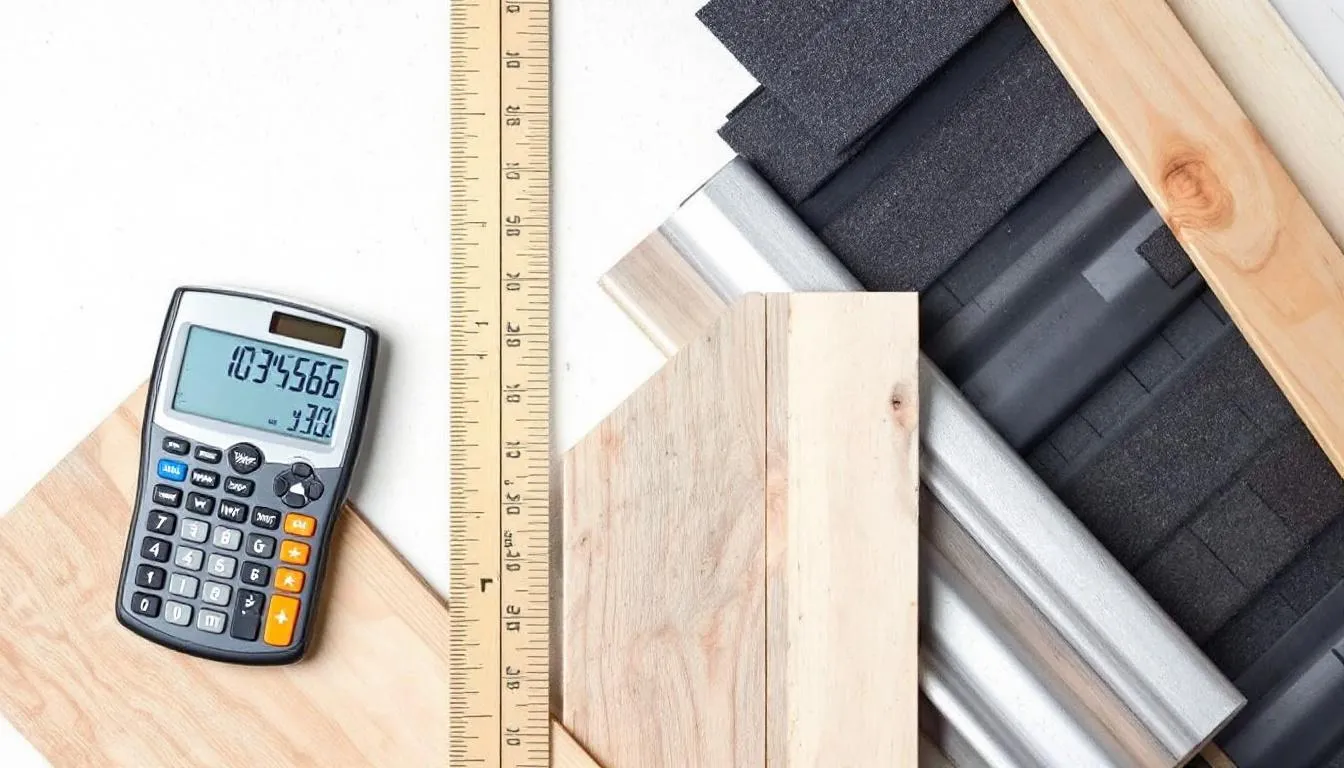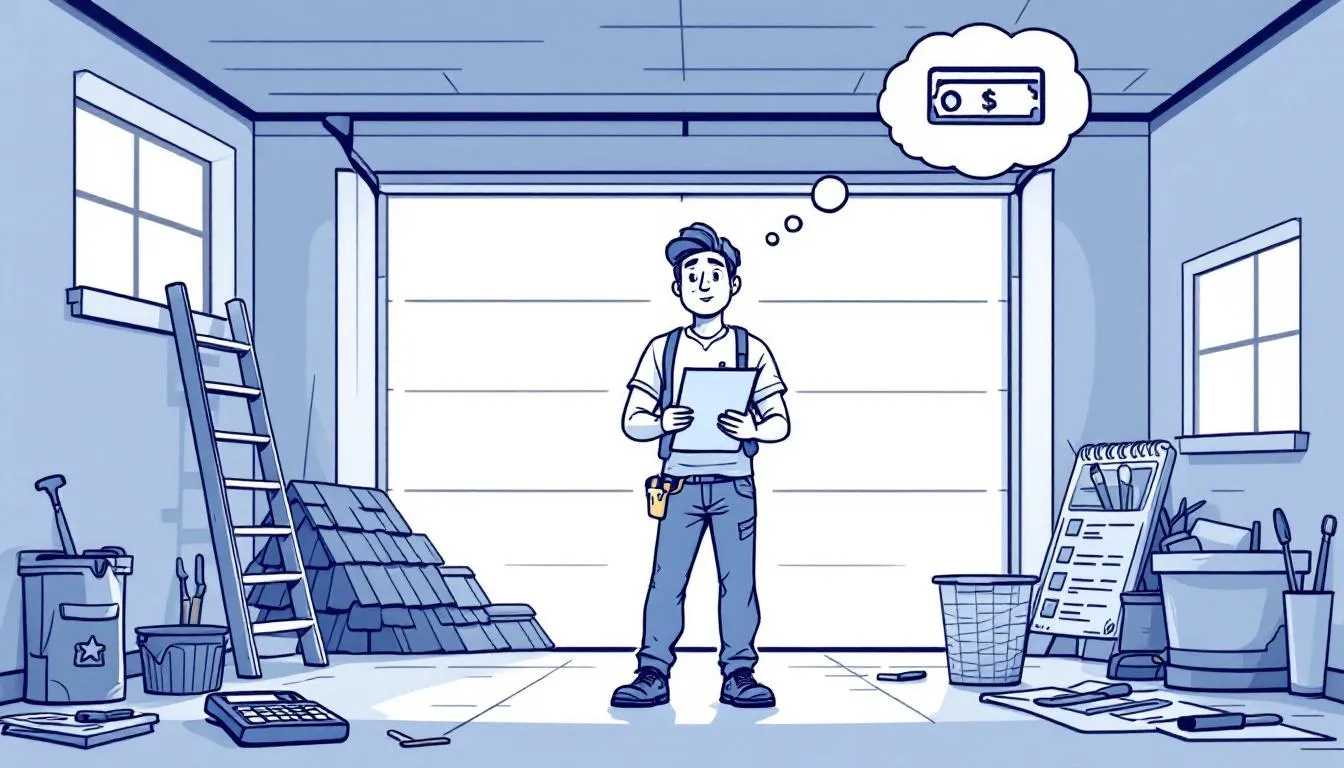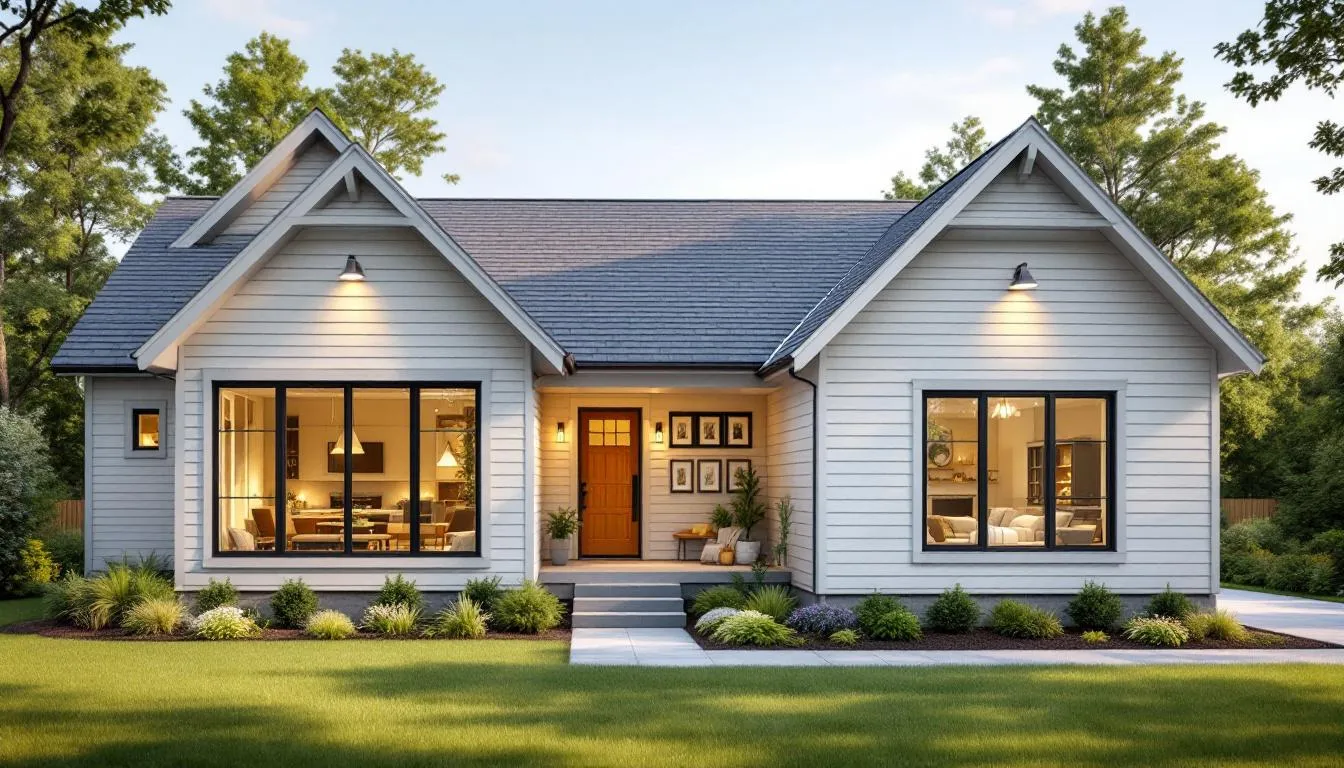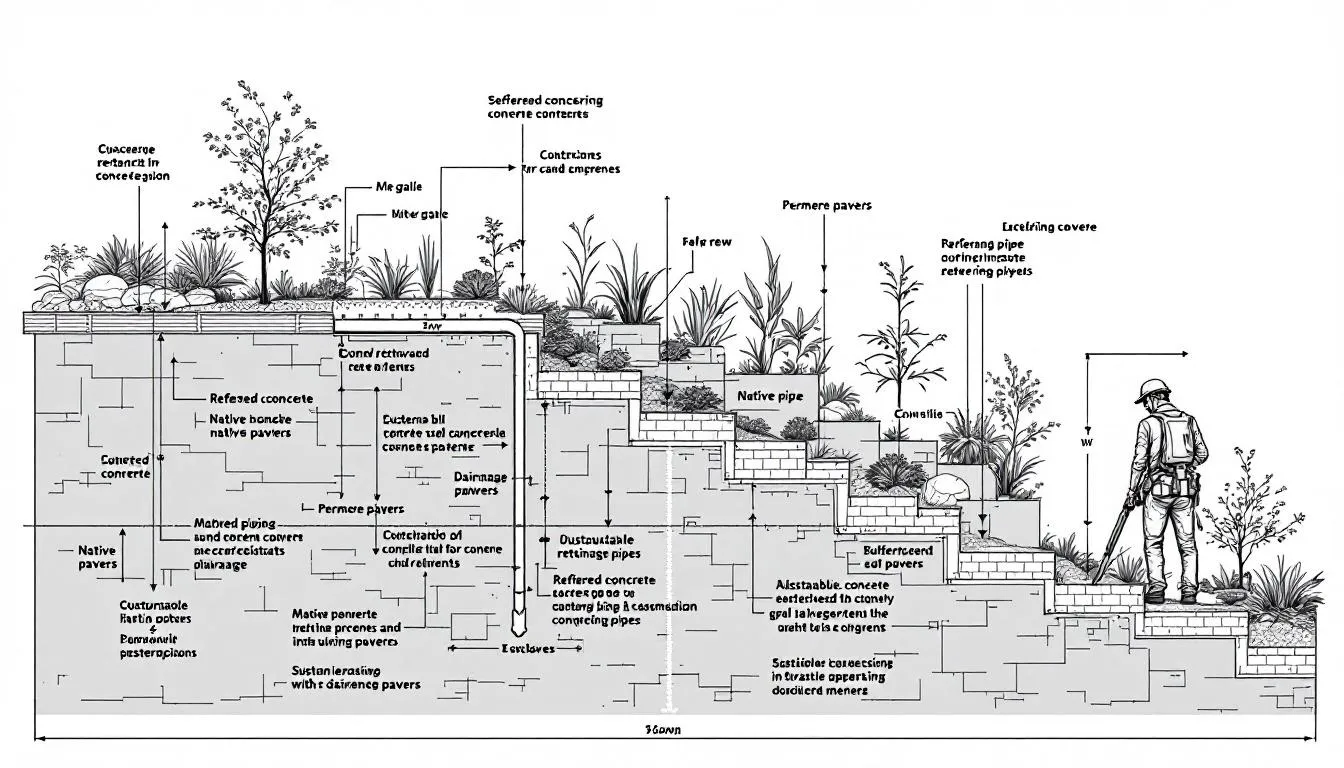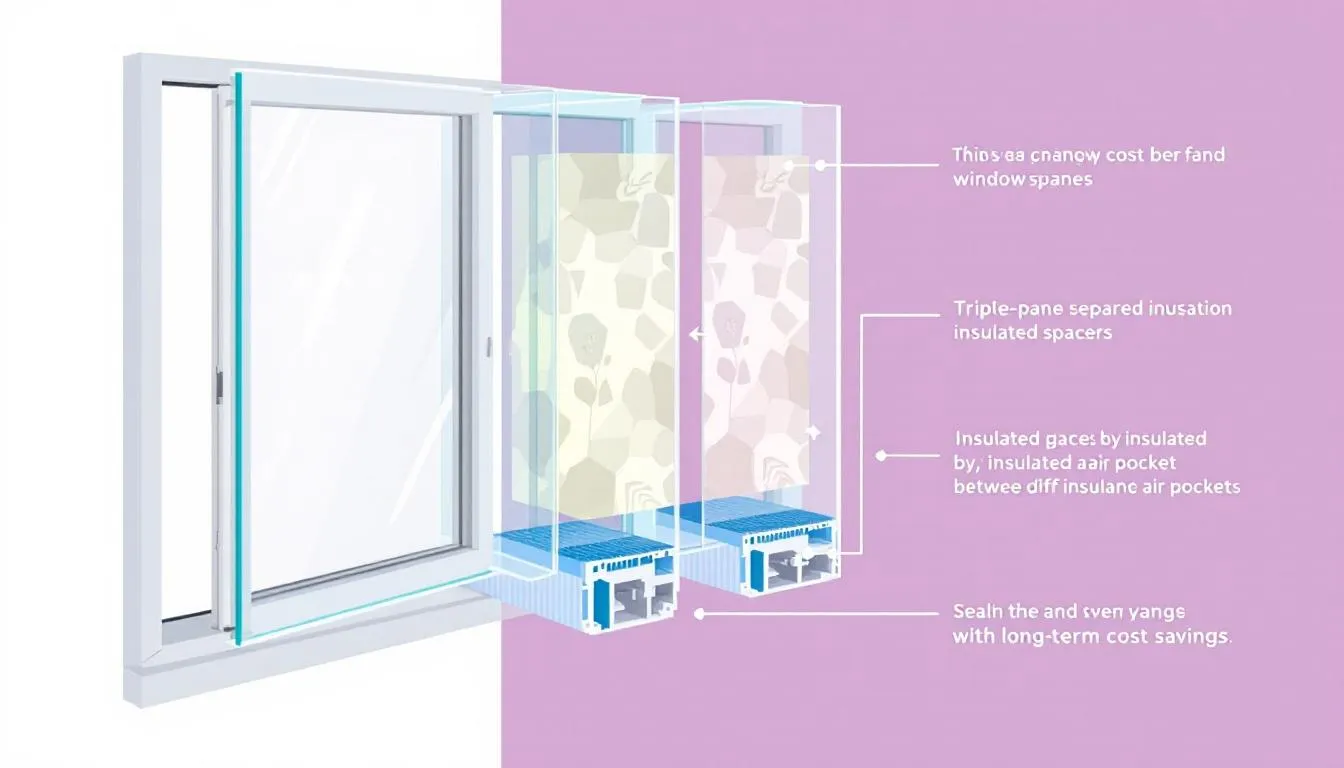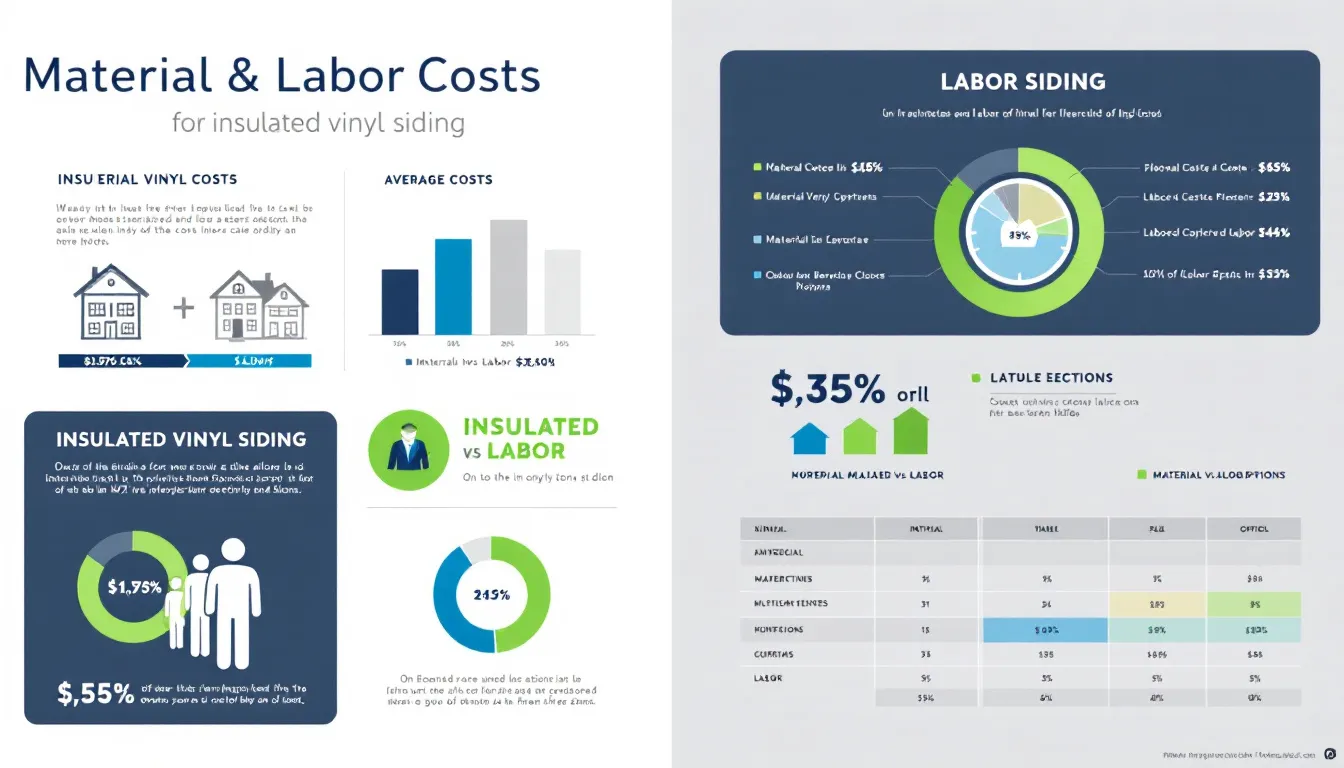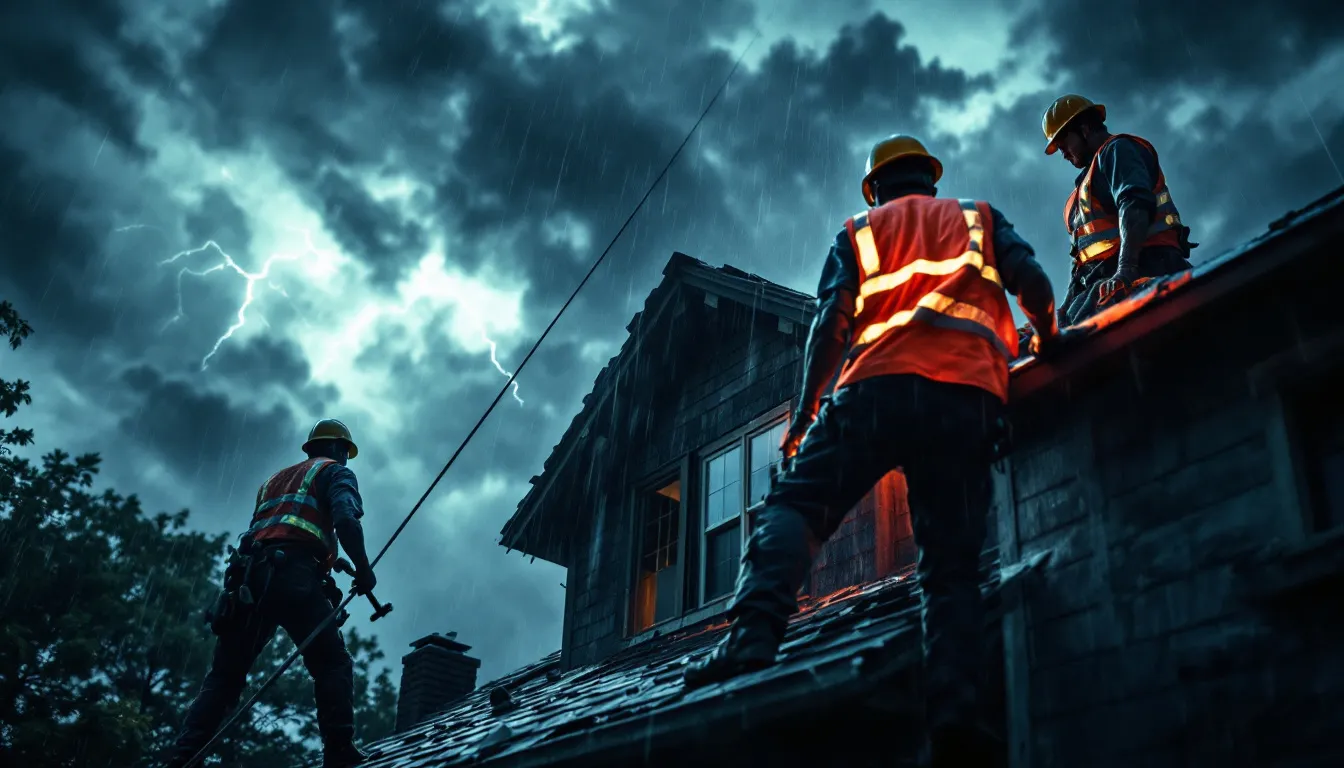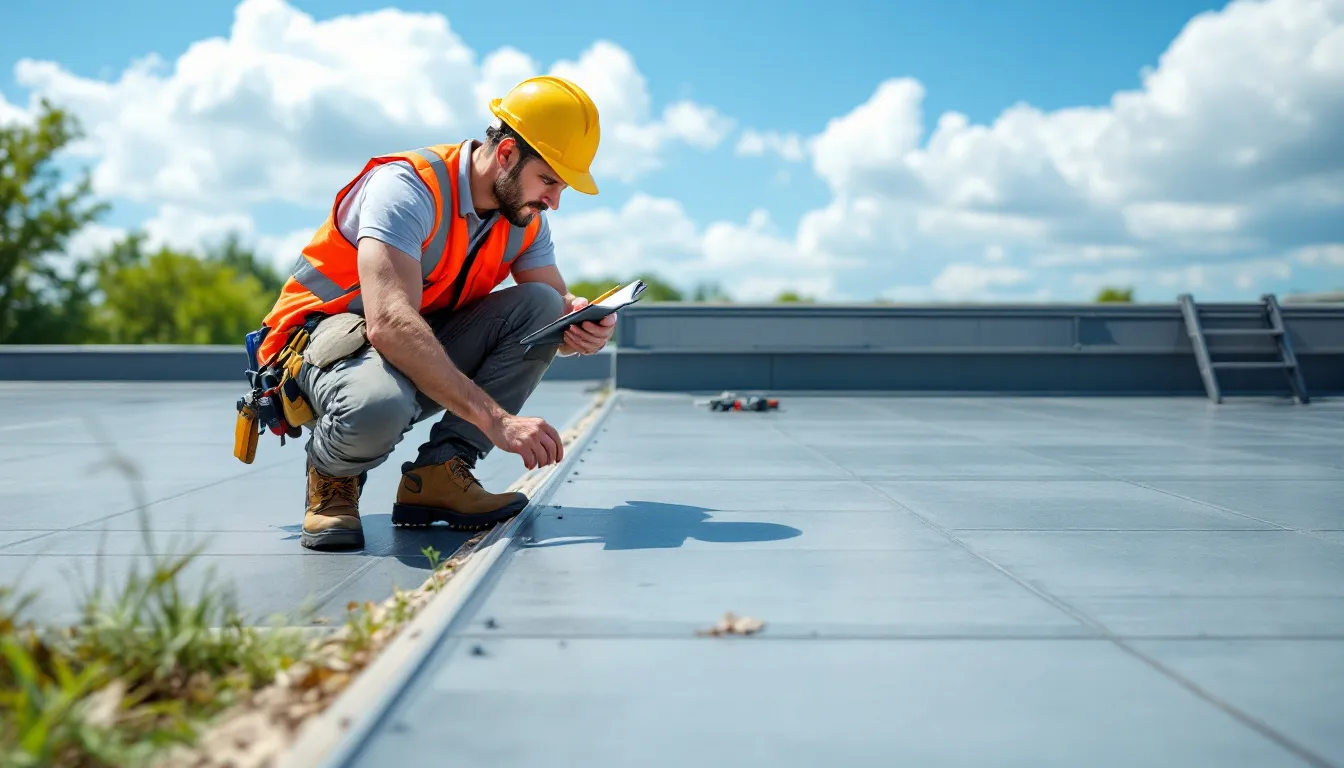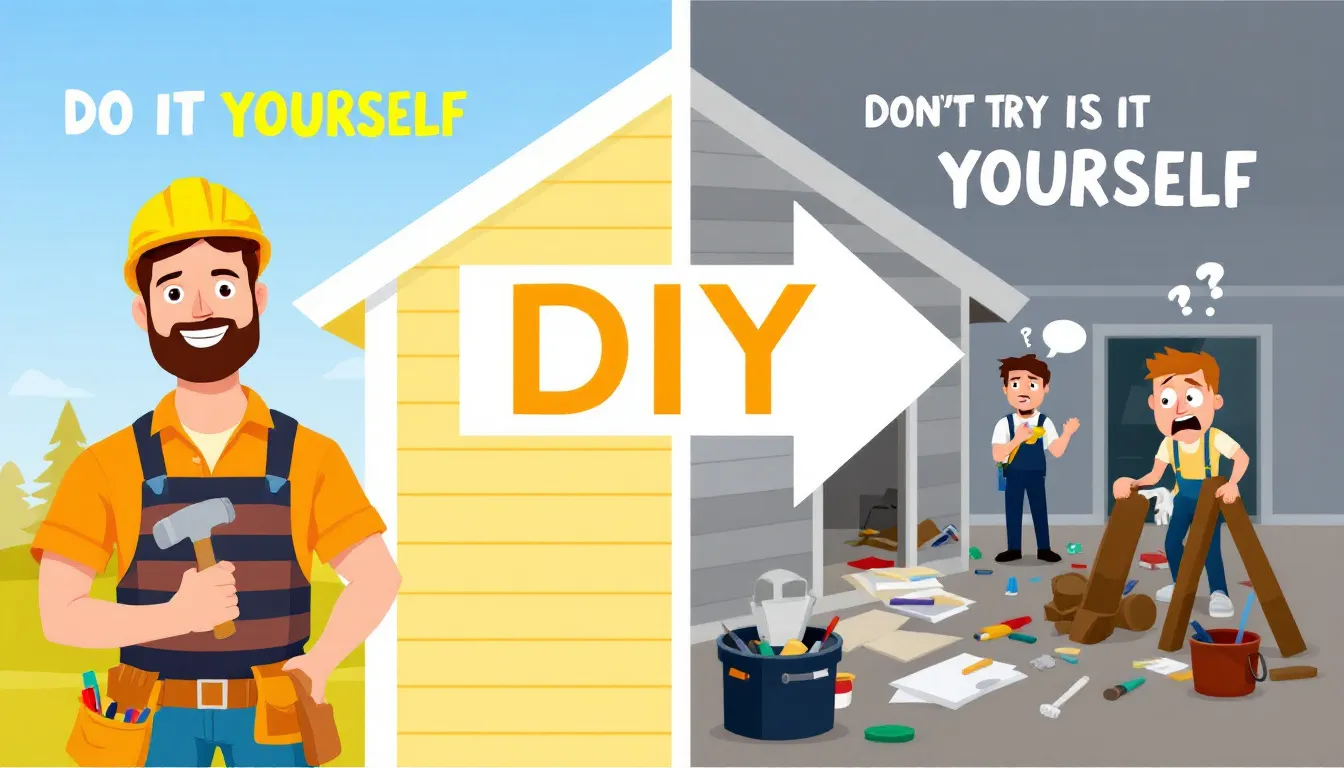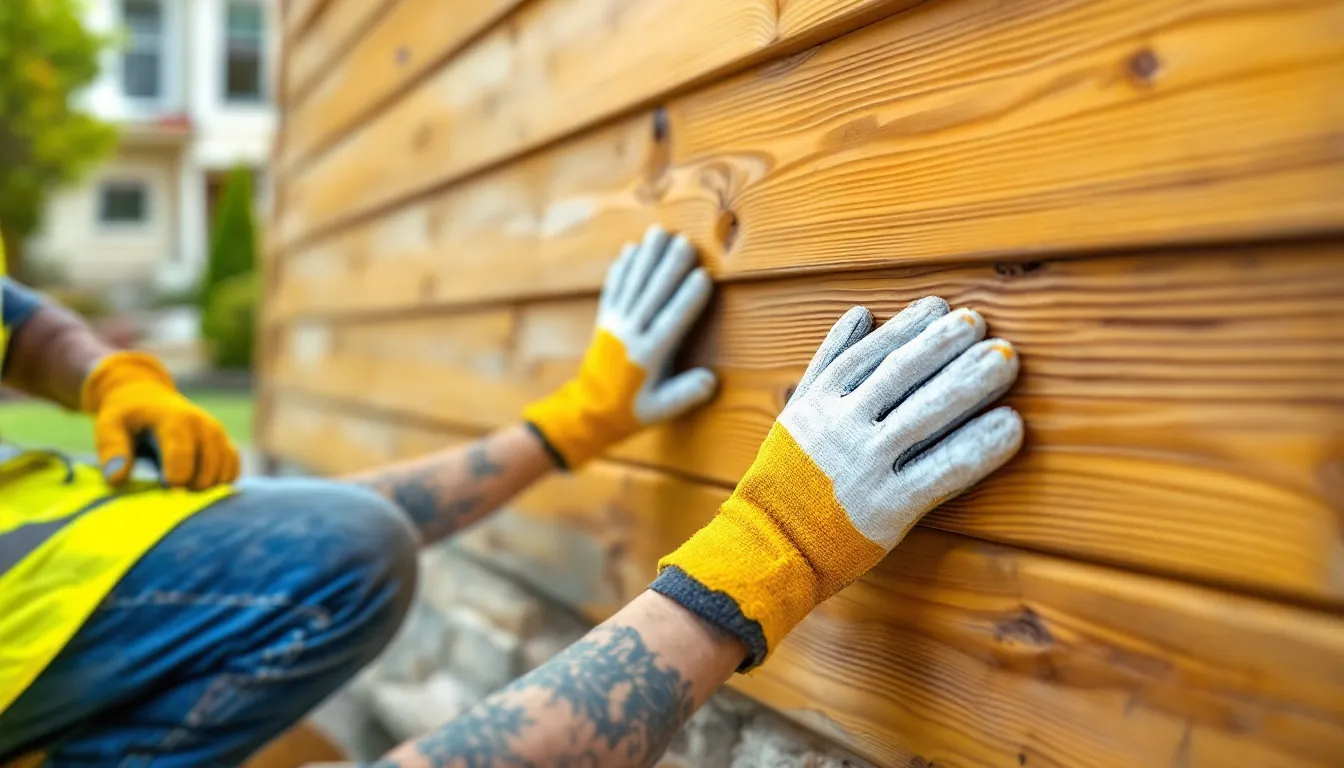The Cost of Siding Installation: What Homeowners Should Know in 2025
Wondering how much siding installation will cost you? Homeowners need to know that the cost of siding installation what homeowners should know typically ranges from $5,562 to $17,625, influenced by factors such as material choice, labor, and your location. This article will guide you through these costs in detail, helping you plan your siding project efficiently.
Key Takeaways
- Siding installation costs vary widely due to factors such as material choice, home size, and geographical location, with total expenses typically ranging from $5,562 to $17,625.
- Labor costs account for 40% to 50% of the total installation price, influenced by project complexity and local market conditions, often rising in metropolitan areas and peak seasons.
- Investing in professional installation ensures proper techniques, adherence to safety standards, and potential savings from warranties, while DIY installations carry risks and may void warranties.
Understanding Siding Installation Costs
Installing new siding is a significant investment, and understanding the costs involved can help homeowners budget effectively. Various factors influence the cost of house siding, including the size and design of the home, the chosen siding material, location, and any required permits. Siding prices are also affected by rising material costs and installation trends projected to continue into 2025.
The type of siding material chosen has a substantial impact on the overall project cost, as different materials come with varying prices and installation complexities. The average cost range for house siding replacement typically falls between $5,562 to $17,625, depending on these influences. While siding cost is usually calculated based on square footage, it’s crucial to consider the additional components that significantly affect the total expenses.
Factor in the style options of vinyl siding, which can contribute to price variations and should be considered in the budgeting process. The choice of siding brand can influence installation costs because prices vary based on product quality and brand reputation. Lastly, budget for potential hidden costs to avoid underestimating expenses.
Material Costs
Material costs are a significant component of the overall siding installation expense. Standard vinyl siding costs range between $300 and $1,200 per square. The price of vinyl siding remains relatively stable but may experience modest hikes.
Wood siding for 1,000 square feet ranges from $6,900 to $13,900, making it a pricier option. Natural stone siding is a high-cost material, priced from $30,000 to $48,000 for 1,000 square feet.
Aluminum siding, a more affordable option, costs between $3.00 and $7.25 per square foot installed. Premium siding materials like fiber cement can increase initial installation costs but offer better durability and aesthetic appeal.
Overall, the choice of siding material can greatly influence the total cost of the project. Carefully consider your budget and the benefits of each material to make an informed decision. A cost sheet and estimated costs can aid in planning and managing expenses effectively.
Labor Costs
Labor costs are a critical factor in siding installation. The average labor cost to install vinyl siding is approximately $3.70 per square foot. However, labor costs for siding installation can vary from $2 to $5 per square foot depending on the complexity of the project and the expertise of the contractor. Labor typically represents approximately 40% to 50% of the overall costs associated with siding installation. A significant portion of the expenses is due to labor.
Geographical location affects labor costs. Labor costs can be significantly higher in metropolitan areas compared to suburban or rural locations. Cities with a higher cost of living generally charge more for labor, reflecting the local economic conditions. Labor costs can spike during high-demand seasons due to shortages and increased wages.
Features such as multi-story homes, complex designs, and the need for old siding removal lead to higher labor costs for many homeowners. Lacking significant DIY experience makes hiring a professional contractor necessary to ensure proper installation and avoid costly mistakes.
Additional Expenses
In addition to material and labor costs, homeowners should be aware of other expenses that can arise during siding installation. Removing existing siding typically costs between $1,000 and $3,000, influenced by home size and siding type. Finishing touches such as paint and trim can also contribute significantly to the total siding installation expenses.
Understanding these additional costs helps in budgeting and preparing for the total costs of the siding installation project. Planning for potential hidden costs helps avoid financial strain and ensures a smoother installation process.
Comparative Analysis: Siding Material Options
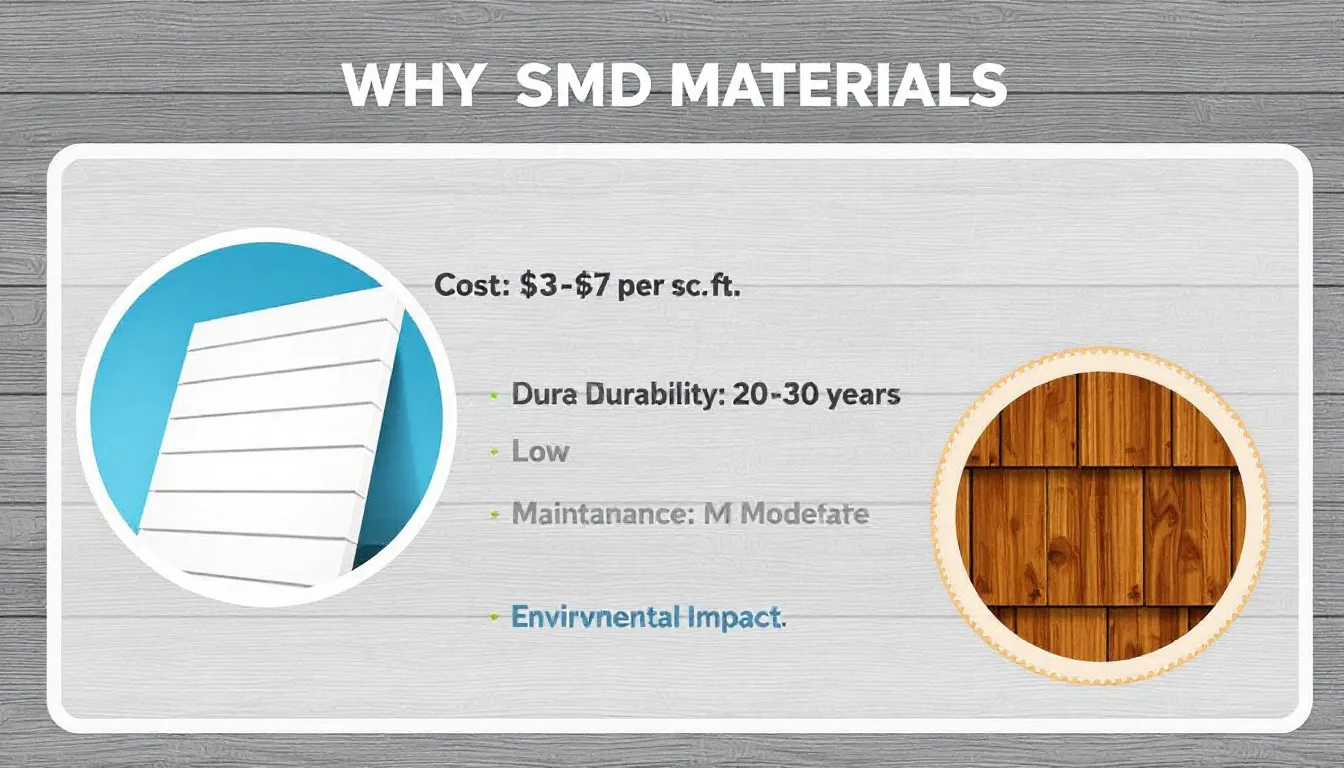
Choosing the right siding material is crucial for both the aesthetics and durability of your home. The siding material choice significantly impacts installation costs, with vinyl being the least expensive.
This section provides a detailed comparative analysis of various siding materials, including vinyl, fiber cement, wood, aluminum, and stone siding. Each material comes with its own set of advantages and disadvantages, influencing the overall cost and performance of the siding project.
Vinyl Siding
Vinyl siding is popular for its affordability and ease of installation. Vinyl siding installation for a typical 2,000-square-foot home costs between $6,370 and $18,250. This range reflects factors that affect installation prices. Quality, craftsmanship, thickness, and length influence the cost of vinyl siding. Vinyl siding is a low-cost option; only aluminum siding is cheaper.
The main advantages of vinyl siding include durability, affordability, and ease of installation. High-quality vinyl siding can mimic traditional materials, offering realistic wood grain textures in various colors and styles. However, maintenance issues and the need for proper installation techniques to avoid warping and buckling are cons, impacting vinyl siding quality.
Insulated vinyl siding increases rigidity and impact resistance, providing additional benefits. Local climate should influence the choice of vinyl siding. This ensures durability and performance. Installation requires correct nailing methods to avoid warping and buckling. Higher-quality or insulated siding can ease installation and reduce long-term issues.
Fiber Cement Siding
Fiber cement siding, more weather-resistant than vinyl, is preferred in harsh climates. Hardie board siding shares the benefits of fiber cement, providing durability and aesthetic appeal. Installing fiber cement siding requires specialized tools due to its weight, which may increase labor costs.
Fiber cement siding requires annual cleaning, and professional repairs may be necessary to maintain its appearance and integrity. Despite higher initial costs, its long-term durability and low maintenance make it cost-effective.
Wood Siding
Natural wood siding, known for its warmth and timeless aesthetic, can be expensive to install. The cost range for engineered wood siding is $1 to $6 per square foot. Wood and engineered wood siding typically have a lifespan of 20 to 40 years.
Poor installation can lead to moisture problems, so hire a professional for engineered wood siding. Natural wood siding’s warm aesthetic appeal enhances a home’s beauty, making it popular despite higher costs.
Aluminum Siding
Aluminum siding is durable and withstands various weather conditions. It is also eco-friendly. Aluminum siding costs between $3 and $6 per square foot. This range applies to different styles and qualities. While durable, aluminum siding can be loud in the rain and is prone to dents and scratches.
Despite its drawbacks, aluminum siding remains popular for its affordability and low maintenance. It’s an excellent option for those seeking cost-effective and eco-friendly siding.
Stone Siding
Natural stone siding is luxurious, known for its beauty and durability. The cost of natural stone siding ranges from $30 to $48 per square foot. The cost for brick and stone siding can reach upwards of $90,000.
Natural stone siding can last over 75 years and requires low maintenance. However, installing natural stone siding is complicated due to its weight, requiring specialized skills and tools.
Despite high initial costs, its long lifespan and requires minimal maintenance make it a worthwhile investment.
Factors Influencing Siding Installation Costs
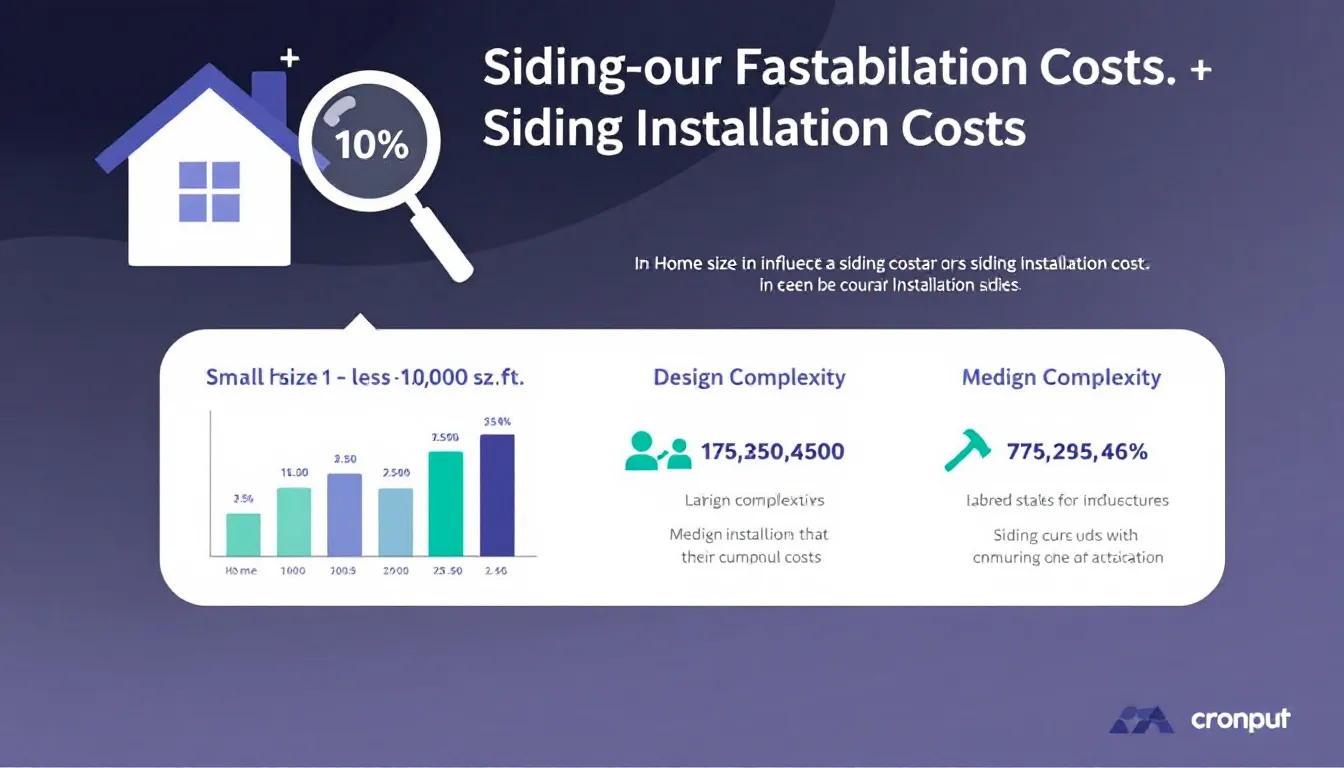
Several factors can influence the overall cost of siding installation. These factors include home size and complexity, regional pricing variations, and seasonal trends.
Understanding these factors helps in budgeting and making informed decisions about siding projects.
Home Size and Design Complexity
Larger homes require more siding and longer labor hours, increasing costs. The shape of exterior walls, steep roof pitches, and large gables increase siding installation costs. Complex designs with multiple windows or detailed trim work also significantly increase material and labor costs.
Unique home shapes and sizes significantly influence the ultimate siding project cost. Consider these elements when budgeting to avoid unexpected expenses.
Regional Pricing Variations
Geographic location substantially impacts siding costs due to local market rates and extreme weather conditions. Local labor and shipping costs influence pricing; materials are more accessible in the Northeast and Midwest and more costly in Southern states, especially when considering extreme weather.
The cost of living affects local labor rates and permits, significantly increasing siding installation costs. Labor and material rates vary widely based on geographical location, significantly impacting siding costs.
Seasonal Pricing Trends
Scheduling siding installation during off-peak times, like winter, can yield cost savings. Scheduling siding installation during the offseason can yield decent deals from contractors. Off-season discounts are a cost-saving advantage.
Spring or fall are the best seasons to replace siding to cut costs. Early spring and fall are the prime times to have siding replaced. Strategically timing your project can significantly reduce expenses and take advantage of lower labor costs.
Preparing for Your Siding Project
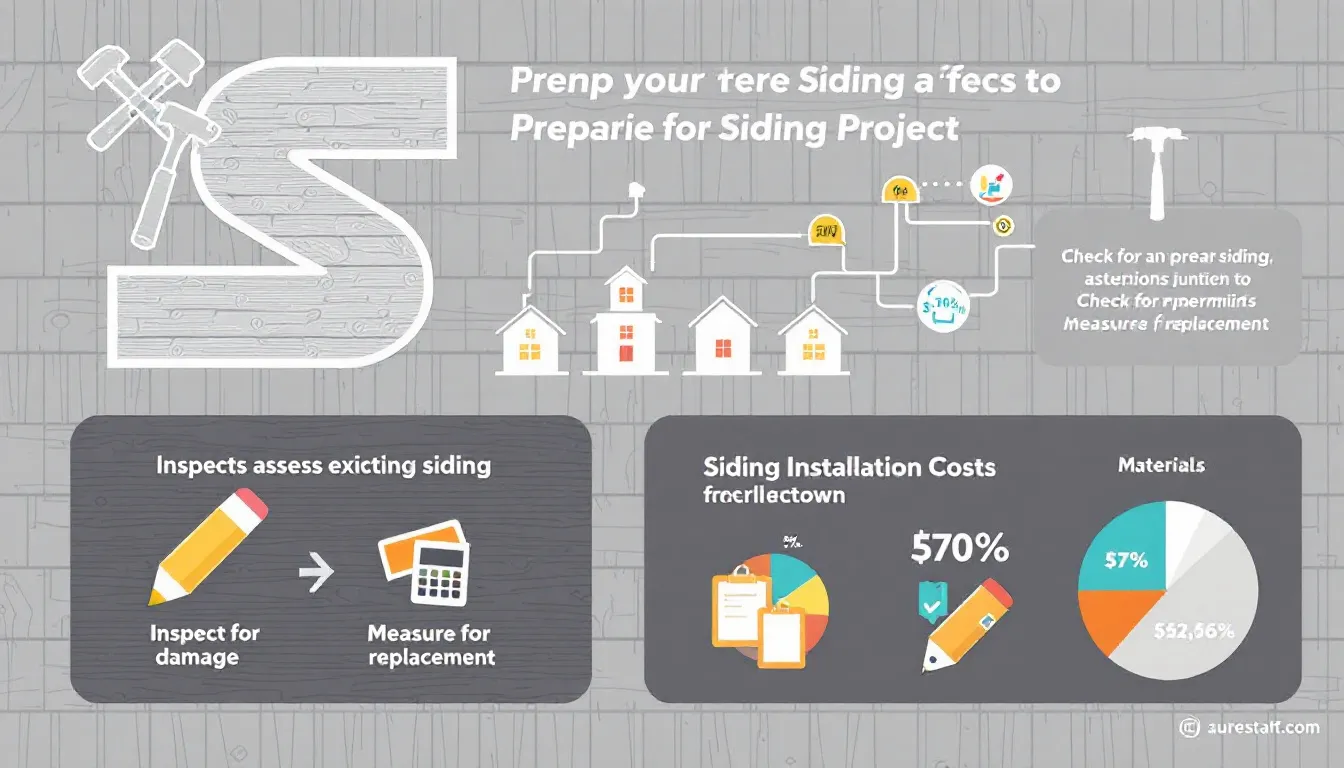
Preparing for a siding project requires careful planning and consideration. Obtain permits, assess existing siding, and budget for unexpected costs. Proper preparation ensures a smooth installation process and helps avoid potential issues.
Obtaining Permits and Inspections
Project size, complexity, and value influence the cost of permits for siding projects. Inspection costs for a siding project range from $100 to $500. Inspections verify that construction meets safety standards, providing additional protection.
Necessary permits safeguard property value by ensuring compliance with local building codes. Contact your contractor or local official to determine if an inspection is required after siding installation.
Assessing Existing Siding
Identifying issues like pests or water damage during assessment can prevent future problems after new siding installation. Regular inspections for wood siding should check for warping, cracking, rot, and pests; maintenance should include repainting and weather treatment every few years.
Repair minor damage in existing siding; for widespread deterioration, full replacement may be necessary. Old siding should usually be removed before installing new siding to fully assess and address any underlying issues.
Proper preparation, including checking for damage before siding application, is crucial for long-term durability.
Budgeting for Unexpected Costs
Trim in siding installation can add costs amounting to $1,381. Cleanup after siding installation typically costs between $200 and $600. In the United States, exterior paint jobs average around $3,178. This figure reflects typical pricing for such services.
Check with your state and local government for tax breaks related to energy efficiency when considering insulated siding and energy costs. Planning for potential hidden costs can help avoid financial strain and ensure a successful siding installation project.
Tips to Save Money on Siding Installation
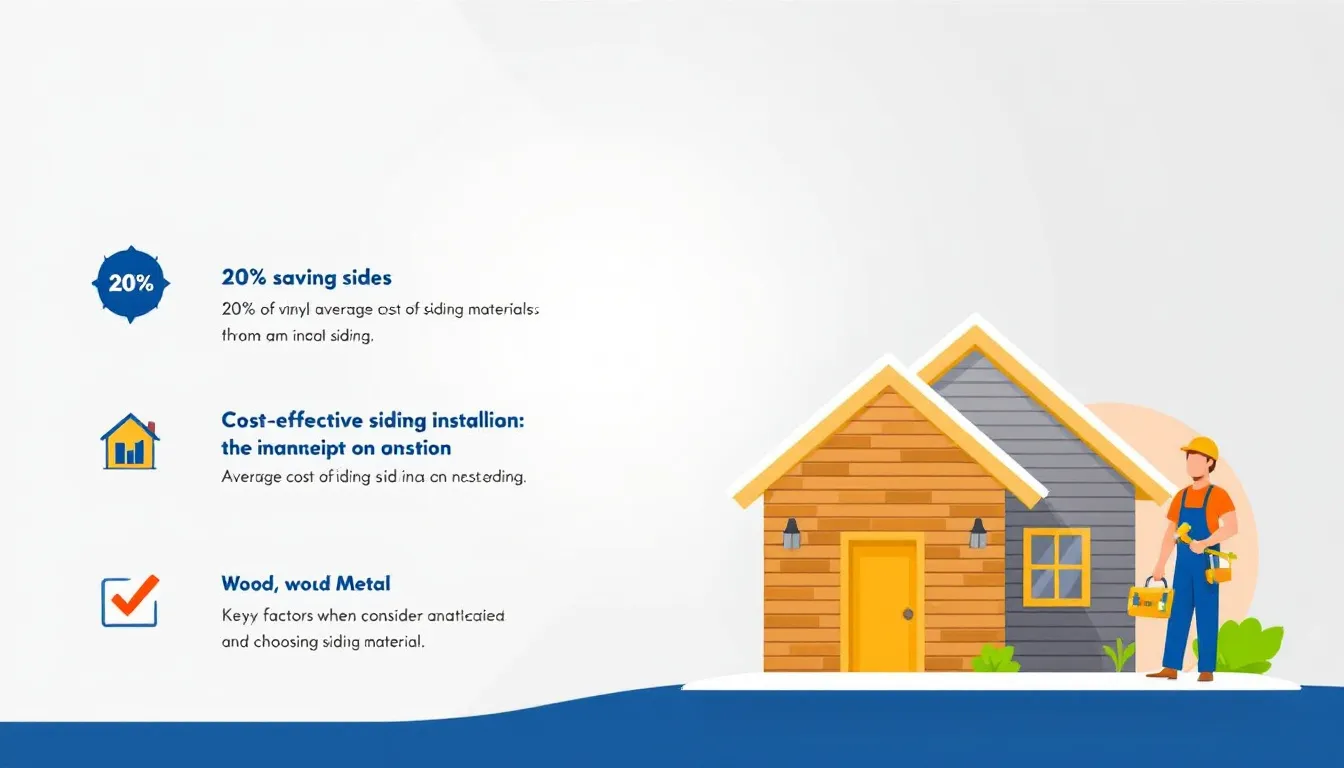
Saving money on siding installation is possible with strategic planning. Homeowners can take advantage of offseason discounts, compare multiple quotes, and choose cost-effective materials to manage expenses without sacrificing quality.
Offseason Discounts
Winter installations often provide substantial savings due to reduced demand. Scheduling installation during the winter can lead to great savings. By timing the project during off-peak times, homeowners can secure significant discounts and save on overall costs.
Comparing Multiple Quotes
Obtaining multiple quotes from contractors is crucial for homeowners to identify the best deal on siding installation. Homeowners should aim to gather at least three or four quotes to identify the best pricing.
Getting a variety of estimates helps in identifying the best financial option for the accurate estimate of the estimated cost of siding installation.
Choosing Cost-Effective Materials
Standard colors and styles for vinyl siding typically cost less than custom options. Homeowners can save on heating and cooling costs by upgrading to energy-efficient siding options. This change can lead to significant financial benefits. New siding can lead to significant savings on energy bills. In some instances, these savings may reach as high as 20 percent.
Choosing cost-effective siding materials is crucial for homeowners looking to manage expenses while ensuring durability for their property’s exterior. Insulated siding not only keeps temperature stable but also improves energy efficiency, contributing to long-term cost savings.
The Benefits of Professional Installation
Hiring a professional siding contractor for siding installation is essential for several reasons. Professionals are trained to avoid installation errors that could lead to structural issues over time. They also ensure adherence to best practices, expert knowledge, specialized equipment, and coverage by insurance.
Ensuring Proper Installation
Hiring a professional for siding installation ensures adherence to best practices, expert knowledge, specialized equipment, and coverage by insurance. Ensuring a watertight seal during siding installation is crucial, which emphasizes the necessity of proper nailing techniques.
Professionals can guarantee a watertight seal and proper insulation, which are vital for the long-term durability of the siding. This not only enhances the performance of the siding but also prevents future structural issues and costly repairs.
Avoiding Common DIY Mistakes
DIY siding installation presents several risks, including injury risks and potential voiding of warranty. Improper siding installation can void the manufacturer’s warranty, leading to costly repairs in the future.
For successful DIY siding installation, it is suggested to have one person cutting and another installing the siding. Vinyl siding is a common material utilized in DIY siding installations due to its ease of handling.
Installing vinyl siding can be a manageable task for experienced homeowners who may take on small siding repairs and replacement projects themselves, but hiring a professional is often the best option to avoid costly mistakes.
Warranty and Insurance Considerations
A professional installation typically includes warranties that protect against future damages. Yes, often a lifetime warranty. Read the fine print for coverage details and limitations.
Professional contractors often have insurance that covers liabilities, providing additional peace of mind. This coverage ensures that any potential damages or issues arising from the installation are managed without financial strain on the homeowner.
Enhancing Curb Appeal and Home Value
New siding significantly increases a home’s attractiveness and generates more interest from buyers. Vinyl siding offers affordability, low maintenance requirements, and versatile design options to improve exterior aesthetics, including quality siding and higher quality siding.
This section explores how different siding materials, including brick veneer and brick siding, can enhance a home’s curb appeal and home value.
Aesthetic Appeal
Vinyl siding provides a variety of styles and colors that can significantly improve a home’s exterior appearance. The flexibility of a vinyl siding project allows homeowners to choose colors that match their exterior design preferences while enhancing curb appeal with a vinyl siding panel.
Aesthetic appeal plays a crucial role in the overall appeal of a home, influencing homeowner satisfaction and property value. By selecting the right siding style and color, homeowners can dramatically enhance their home’s exterior aesthetic appeal, creating a welcoming and attractive environment.
Energy Efficiency Improvements
Adding insulation through insulated siding improves energy efficiency and reduces heating and cooling expenses. Insulated vinyl siding can help reduce heating and cooling bills by improving home insulation. Overall, new siding improves energy efficiency, leading to significant long-term savings.
Insulated siding plays a critical role in enhancing the energy efficiency of a home.
Long-Term ROI
The average return on investment (ROI) for siding replacement typically ranges from 80% to 95%. Return on investment (ROI) is a critical metric for homeowners considering siding replacement.
Siding replacement not only improves the appearance and energy efficiency of a home but also provides a substantial return on investment. Homeowners can enjoy the benefits of enhanced curb appeal, energy savings, and exterior renovations while increasing their property’s market value through full siding replacement.
Summary
Understanding the costs and benefits of siding installation is essential for homeowners planning a siding project in 2025. From material and labor costs to additional expenses, this guide has provided a comprehensive overview to help you make informed decisions. Comparing different siding materials, considering seasonal trends, and preparing for potential hidden costs will ensure a successful project.
By investing in high-quality siding and professional installation, homeowners can enhance their home’s curb appeal, improve energy efficiency, and increase property value. Making informed choices and planning strategically can lead to significant long-term benefits and a high return on investment.
